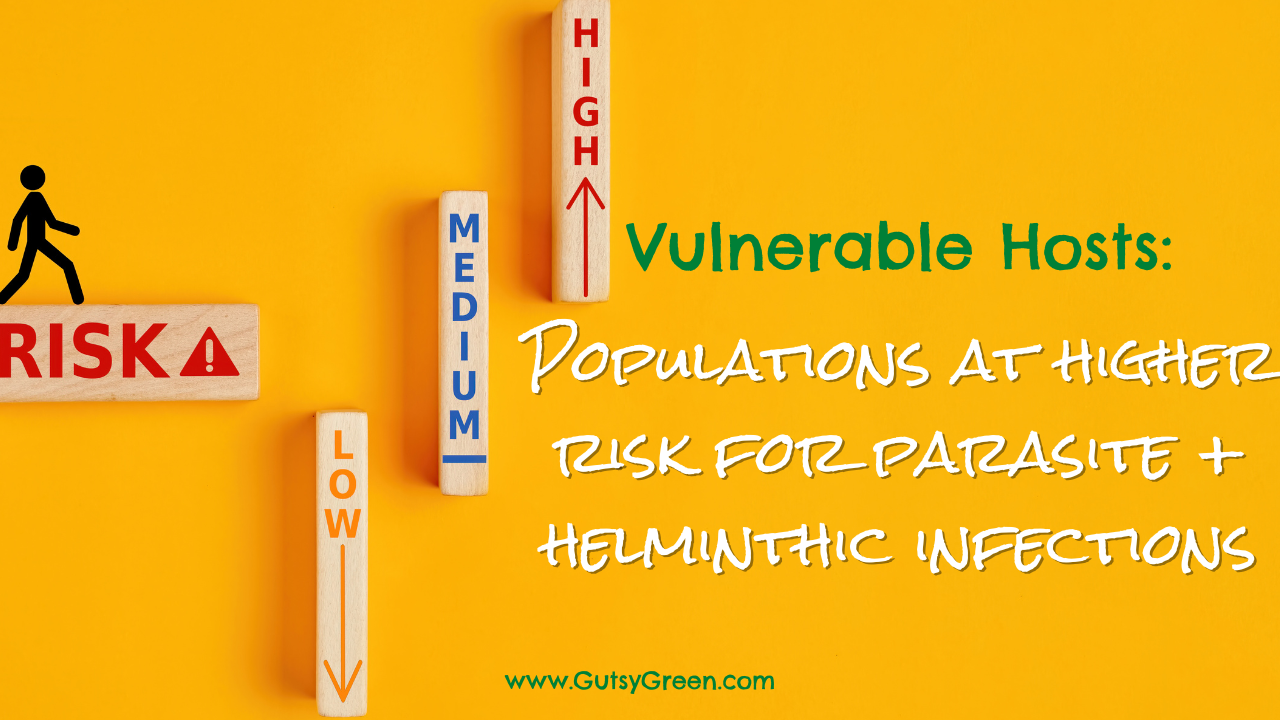Vulnerable Hosts: Populations at Higher Risk of Parasite and Helminthic Infections

In the intricate world of host-parasite interactions, specific populations are more susceptible to parasite and helminthic infections.
These infections can range from mild to severe and are often linked to unsanitary conditions and poor hygiene.
In this article, we'll explore who is most likely to contract these infections and why they are challenging to detect, often remaining undiagnosed.
Understanding Parasite and Helminth Infections
Parasites and helminths are organisms that thrive by infecting a host, drawing nutrients from them, and, in some cases, causing diseases.
These infections are typically transmitted through contaminated food, water, soil, or contact with infected individuals.
Populations at Higher Risk
CHILDREN
Children are particularly vulnerable to parasite and helminth infections.
Their underdeveloped immune systems are less effective at fighting off these invaders.
Additionally, children frequently engage in exploratory behaviors that increase their risk, such as playing in contaminated soil, touching unsanitary objects, and sometimes failing to practice good hand hygiene.
Common infections in children include pinworms, roundworms, and giardiasis.
Why they're at risk: Lack of immunity, hand-to-mouth behavior, and exposure to contaminated environments.

PEOPLE LIVING IN LOW-INCOME REGIONS
Individuals residing in economically disadvantaged areas, especially in developing countries, face a higher risk of parasitic and helminthic infections.
Poor sanitation, limited access to clean water, and inadequate healthcare facilities contribute to the prevalence of these infections.
Diseases like schistosomiasis, soil-transmitted helminthiasis, and amebiasis are more common in these regions.
Why they're at risk: Poor sanitation, limited access to clean water, and a lack of healthcare resources.
TRAVELERS AND MIGRANTS
Travelers, especially those visiting regions with poor sanitation or high parasite prevalence, face a higher risk of contracting parasitic infections.
Inadequate food and water safety precautions can expose travelers to contaminated sources.
Additionally, migrants moving from areas with a high burden of parasitic diseases may continue to carry and spread infections to new regions.
Why they're at risk: Exposure to unfamiliar environments, risky food and water sources, and the potential for carrying infections from endemic regions.
IMMUNOCOMPROMISED INDIVIDUALS
People with weakened immune systems, such as those living with HIV/AIDS, undergoing chemotherapy, or taking immunosuppressive medications, are at increased risk of parasitic and helminthic infections.
In these individuals, infections that would typically be controlled by a healthy immune system can become severe or even life-threatening.
Opportunistic parasites like Toxoplasma gondii and Cryptosporidium can pose a significant threat.
Why they're at risk: Weakened immune defenses make it harder to combat infections.

Challenges in Detection
Detecting parasitic and helminthic infections can be challenging for several reasons:
- Mild and Non-Specific Symptoms: The symptoms of these infections are often mild and non-specific. They may overlap with those of other common conditions, making it difficult to pinpoint the cause.
- Delayed Onset: Symptoms of these infections may not appear immediately after exposure. It can take weeks or even months for signs to manifest, complicating the connection between symptoms and the cause.
- Variability: The severity and presentation of symptoms can vary widely from person to person, further complicating diagnosis.
- Lack of Awareness: In many cases, individuals may not be aware of the potential for parasitic infections, leading to delayed diagnosis.
Prevention and Intervention
Preventing parasitic and helminthic infections involves various strategies, including improving sanitation, access to clean water, and hygiene education.
Regular deworming programs, proper food handling, and traditional parasite cleansing can help reduce the risk.
Additionally, individuals traveling to endemic regions should take precautions, such as consuming safe food and water, practicing good hygiene, and cleansing afterwards.
Conclusion
Understanding who is most likely to contract parasitic and helminthic infections and why is crucial for developing effective prevention and intervention strategies.
These infections are often silent and elusive, making early detection challenging.
More awareness, education, and cleansing initiatives can play a significant role in reducing the burden of these infections on vulnerable populations and enhancing detection rates.
...
Curious if you fit the bill for a tapeworm presence? Check out our free quiz here.


